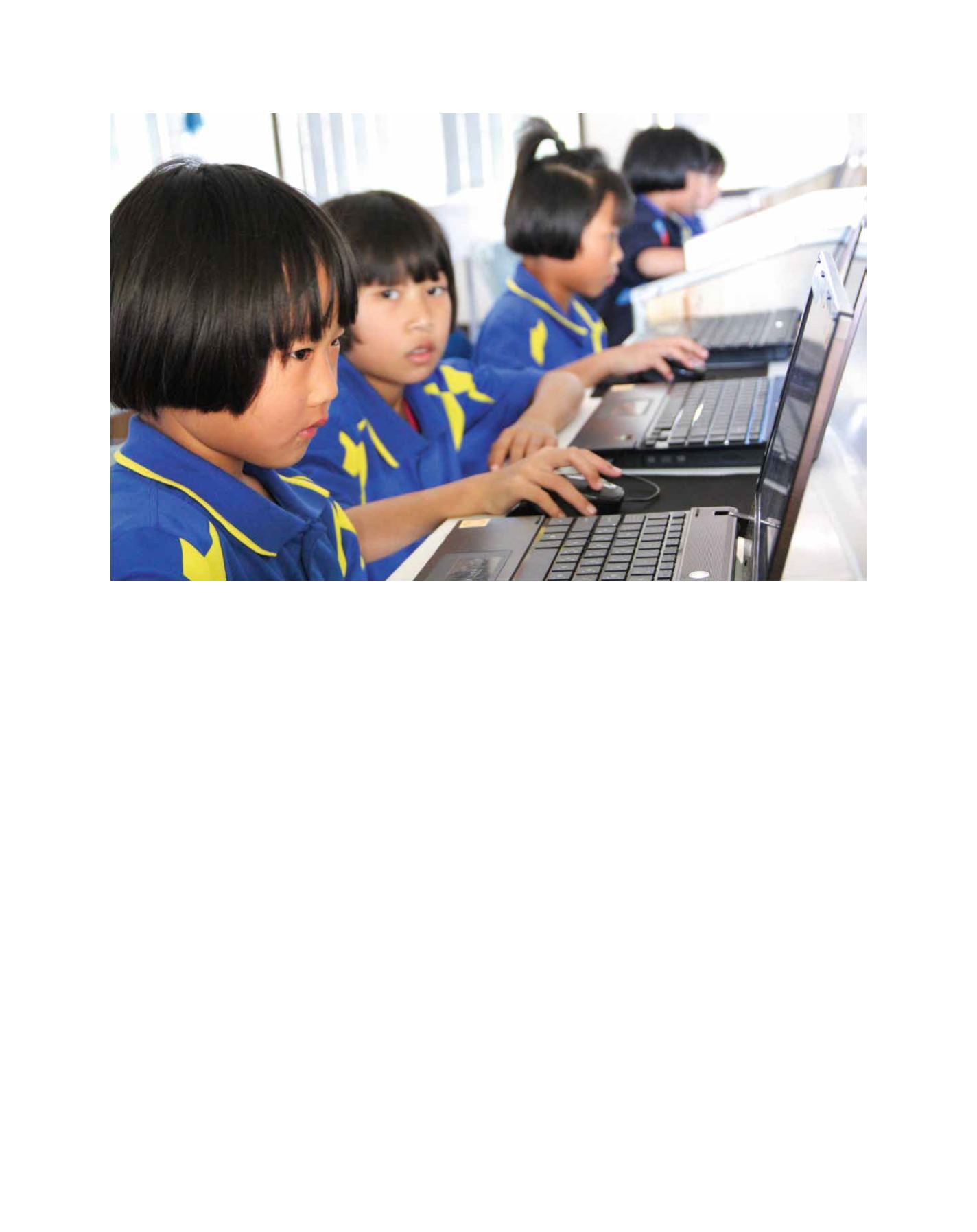

[
] 34
Technological advancements are rapidly transforming
economies and charting the path towards an increasingly
digital economy. In South-East Asia, for instance, by 2030,
a new wave of disruptive innovations created by, among
other things, the development of the Internet of Things,
mobile Internet, big data and cloud technology could lead to
an increase of up to 12 per cent in GDP.
10
These disruptive
technologies will shape the future of many sectors, including
those with a high concentration of women-owned enterprises
such as the agriculture, food and retail sectors. If effectively
leveraged, they could unleash new market opportunities and
provide productivity and efficiency gains for large companies
and SMEs, including women-owned enterprises.
Harnessing the transformative capabilities of ICT will
require Asia and the Pacific to significantly enhance ICT
connectivity. ESCAP research has revealed that there is an
alarming digital divide in broadband connectivity among the
Asia-Pacific region. As many as 20 countries in the region
have below 2 per cent of fixed broadband subscription per
100 inhabitants,
11
while ICT champions such as the Republic
of Korea enjoy over 40 per cent. These disparities exist not
only between and within countries, but as mentioned earlier,
they also exist between men and women. Thus, when taking
into account both the digital and the gender divide, the need
to place particular focus on women’s access to productive ICT
tools becomes even more pressing.
To enable more women to participate and benefit from the
rapidly changing digital economy, ESCAP is rolling out a new
regional programme in 2016 – the Women and ICT Frontier
Initiative. This comprehensive and integrated ICT and entre-
preneurship training programme is being implemented in
partnership with government agencies and national training
institutions to support women’s access to technology and
build their skills to start and expand their businesses.
Leaving no one behind
The 2030 Agenda provides us with a blueprint for global
progress to achieve sustainable development, and gender
equality and women’s empowerment are drivers of this
progress. To transform its vision of gender equality into a
reality, we need catalytic policy initiatives backed by adequate
financing. Comprehensive gender-responsive budgeting is
one of the tools at the disposal of governments to ensure
that enough financing is committed throughout the system
to convert intentions into actions, contributing to equitable
outcomes for women and men, girls and boys. Promoting
women’s entrepreneurship is another important mechanism
that can both increase the economic empowerment of women
and enhance economic output, employment creation and
women’s participation in the labour force.
ESCAP plays a pivotal role in the Asia-Pacific region,
working with governments to enhance investments in gender
equality and women’s empowerment. Leaving no one behind
in Asia and the Pacific requires that the commitments we have
made for gender equality translate into resources and oppor-
tunities for the advancement of women and girls in all aspects
of society and life, and harnessing their productive potential
for sustainable prosperity.
Young students learn computer skills to prepare themselves for the future
Image: Tuenjai Chuabsamai/ESCAP
A B
etter
W
orld
















